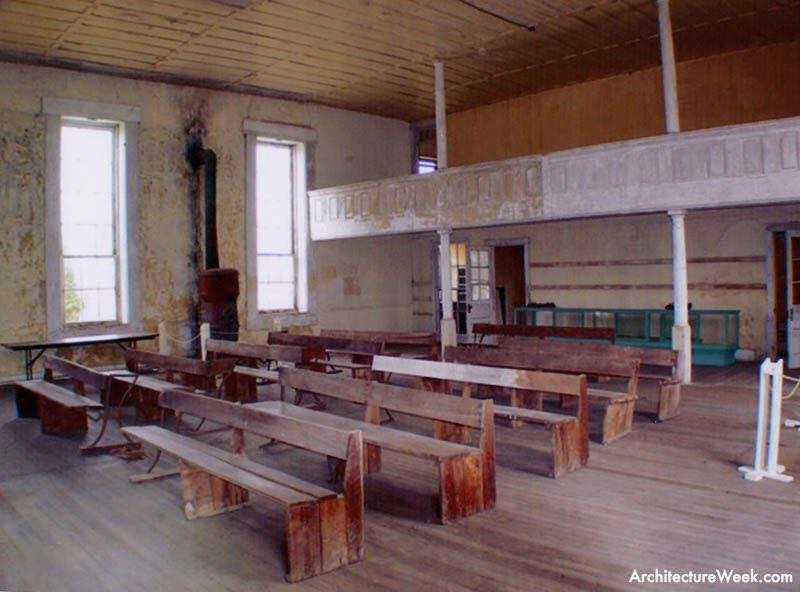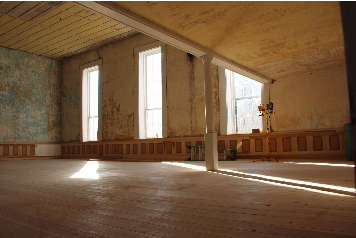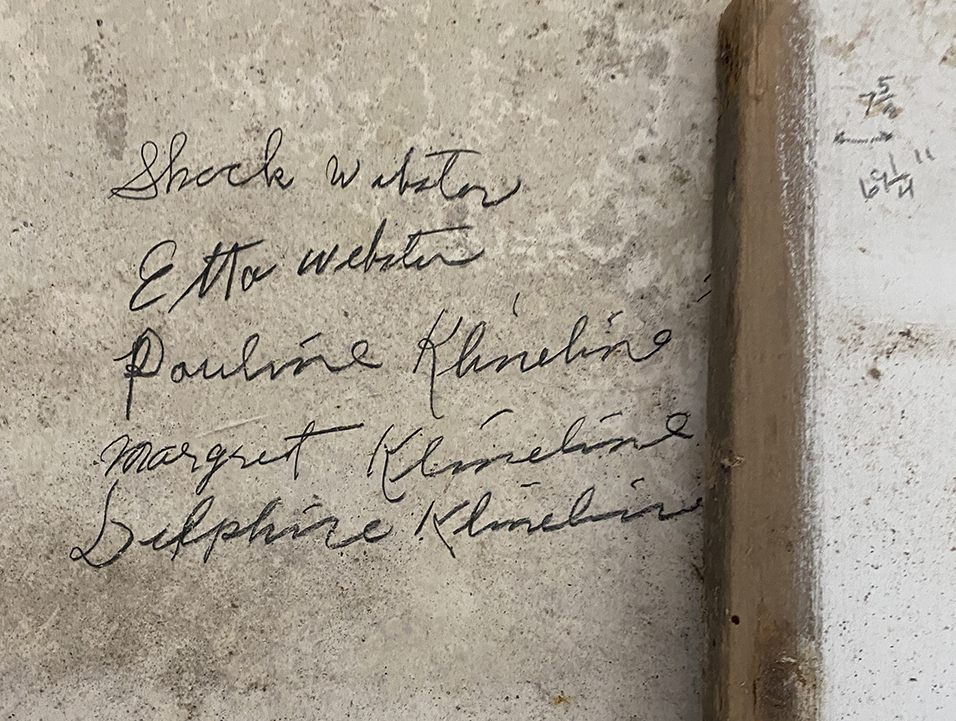The Building & Grounds
The chapel and classroom building –– a three-story structure built from locally quarried, rough-cut limestone, constructed from 1852 to 1854 –– is the only remaining structure of the campus, which also had included a two-story stone dormitory building, as well as several cabins built the families of some students who attended the college.
The building site is about 200 feet from from State Hwy. 250; the structure stands elegantly on a rise that was named College Hill. Facing east, it measures 42 feet across the front and 65 feet going west to the rear of the building.
The chapel is the whole of the first floor, complete with six two-story windows and a balcony that sits above the two entrances to the room from the foyer. At either end of the foyer is a set of stairs leading to two rooms on the second floor; two doors at the top of each staircase lead into the balcony. Two more sets of stairs lead to the third floor, where one room spans across the front of the building; a hallway leads to two classrooms, one on each side, and a large classroom that spans the back of the building.
The old plaster walls on the second and third floors bear the signatures of hundreds of students who attended both the college and the township school. After the school closed, former students and members of the community returned to the building on College Hill for annual reunions. The oldest signature appears to be from a man named William Craig, who included the date––1858. Board members agree that some of these signatures should be preserved when the upper floors are restored; which ones and how to preserve them is still up for debate.
Historians doubt that either of the college buildings were used to hide runaway slaves, as that would have put the students, who all paid tuition to attend, in certain danger from those who were against educating negroes. However, most of the families involved in creating not just the anti-slavery society and Baptist Church were conductors and station masters who helped blacks travel further north, often to Canada, which had banned slavery in 1838.



